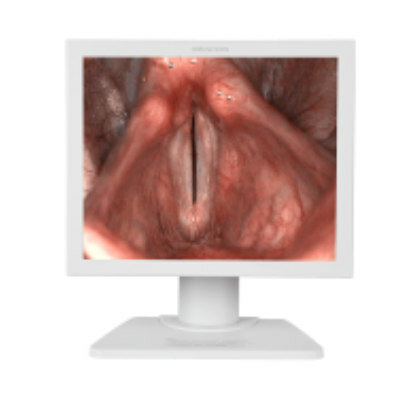Mini Pacemaker Makes Heart Surgery Easier for Children
|
By HospiMedica International staff writers Posted on 20 Nov 2018 |

Image: Members of Children\'s National run through the procedure used to implant the pacemaker (Photo courtesy of CNHS).
A new study describes how a tiny pacemaker, about the size of an almond, leads to shorter surgeries, faster recovery times, and reduced medical costs.
Developed by Medtronic (Dublin, Ireland), in collaboration with researchers at Children's National Health System (CNHS; Washington, DC, USA), the uniqueness of the prototype miniature pacemaker lies in the PeriPath, a two-channel, self-anchoring access port that allows surgeons to insert a video camera into one channel in order to directly visualize the entire procedure. A sheath, inserted through the second channel, is then used to access the pericardial sac to affix the miniature pacemaker’s leadlet onto the surface of the heart, under direct visualization.
The final step is inserting the pacemaker itself into the one centimeter incision and closing it, leaving a tiny scar instead of two large suture lines. In a preliminary study of the percutaneous procedure, median time from incision to implantation was 21 minutes, and the entire procedure took less than an hour on average. In contrast, pediatric open-heart surgery can take up to several hours, depending on the child's medical complexities. The prototype pacemaker was presented at the American Heart Association (AHA) scientific sessions, held during November 2018 in Chicago (IL, USA).
“Advancements in surgical fields are tending toward procedures that are less and less invasive. There are many laparoscopic surgeries in adults and children that used to be open surgeries, such as appendix and gall bladder removals,” said study presenter cardiology fellow Rohan Kumthekar, MD. “However, placing pacemaker leads on infants' hearts has always been an open surgery. We are trying to bring those surgical advances into our field of pediatric cardiology to benefit our patients. As cardiologists and pediatric surgeons, our goal is to put a child's health and comfort first.”
“Placing a pacemaker in a small child is different than operating on an adult, due to their small chest cavity and narrow blood vessels. By eliminating the need to cut through the sternum or the ribs and fully open the chest to implant a pacemaker, the current model, we can cut down on surgical time and help alleviate pain,” concluded Dr. Kumthekar. “The advantage is that the entire surgery is contained within a tiny one centimeter incision, which is what we find groundbreaking.”
“The concept of inserting a pacemaker with a 1-cm incision in less than an hour demonstrates the power of working with multidisciplinary research teams to quickly solve complex clinical challenges,” added senior study author electrophysiologist Charles Berul, MD, chief of cardiology at CNHS, and inventor of the PeriPath self-anchoring access port, which was developed at the CNHS Sheikh Zayed Institute for Pediatric Surgical Innovation.
Developed by Medtronic (Dublin, Ireland), in collaboration with researchers at Children's National Health System (CNHS; Washington, DC, USA), the uniqueness of the prototype miniature pacemaker lies in the PeriPath, a two-channel, self-anchoring access port that allows surgeons to insert a video camera into one channel in order to directly visualize the entire procedure. A sheath, inserted through the second channel, is then used to access the pericardial sac to affix the miniature pacemaker’s leadlet onto the surface of the heart, under direct visualization.
The final step is inserting the pacemaker itself into the one centimeter incision and closing it, leaving a tiny scar instead of two large suture lines. In a preliminary study of the percutaneous procedure, median time from incision to implantation was 21 minutes, and the entire procedure took less than an hour on average. In contrast, pediatric open-heart surgery can take up to several hours, depending on the child's medical complexities. The prototype pacemaker was presented at the American Heart Association (AHA) scientific sessions, held during November 2018 in Chicago (IL, USA).
“Advancements in surgical fields are tending toward procedures that are less and less invasive. There are many laparoscopic surgeries in adults and children that used to be open surgeries, such as appendix and gall bladder removals,” said study presenter cardiology fellow Rohan Kumthekar, MD. “However, placing pacemaker leads on infants' hearts has always been an open surgery. We are trying to bring those surgical advances into our field of pediatric cardiology to benefit our patients. As cardiologists and pediatric surgeons, our goal is to put a child's health and comfort first.”
“Placing a pacemaker in a small child is different than operating on an adult, due to their small chest cavity and narrow blood vessels. By eliminating the need to cut through the sternum or the ribs and fully open the chest to implant a pacemaker, the current model, we can cut down on surgical time and help alleviate pain,” concluded Dr. Kumthekar. “The advantage is that the entire surgery is contained within a tiny one centimeter incision, which is what we find groundbreaking.”
“The concept of inserting a pacemaker with a 1-cm incision in less than an hour demonstrates the power of working with multidisciplinary research teams to quickly solve complex clinical challenges,” added senior study author electrophysiologist Charles Berul, MD, chief of cardiology at CNHS, and inventor of the PeriPath self-anchoring access port, which was developed at the CNHS Sheikh Zayed Institute for Pediatric Surgical Innovation.
Latest Surgical Techniques News
- Robotic Assistant Delivers Ultra-Precision Injections with Rapid Setup Times
- Minimally Invasive Endoscopic Surgery Improves Severe Stroke Outcomes
- Novel Glue Prevents Complications After Breast Cancer Surgery
- Breakthrough Brain Implant Enables Safer and More Precise Drug Delivery
- Bioadhesive Sponge Stops Uncontrolled Internal Bleeding During Surgery
- Revolutionary Nano Bone Material to Accelerate Surgery and Healing
- Superior Orthopedic Implants Combat Infections and Quicken Healing After Surgery
- Laser-Based Technique Eliminates Pancreatic Tumors While Protecting Healthy Tissue
- Surgical Treatment of Severe Carotid Artery Stenosis Benefits Blood-Brain Barrier
- Revolutionary Reusable Duodenoscope Introduces 68-Minute Sterilization
- World's First Transcatheter Smart Implant Monitors and Treats Congestion in Heart Failure
- Hybrid Endoscope Marks Breakthrough in Surgical Visualization
- Robot-Assisted Bronchoscope Diagnoses Tiniest and Hardest to Reach Lung Tumors
- Diamond-Titanium Device Paves Way for Smart Implants that Warn of Disease Progression
- 3D Printable Bio-Active Glass Could Serve as Bone Replacement Material
- Spider-Inspired Magnetic Soft Robots to Perform Minimally Invasive GI Tract Procedures
Channels
Critical Care
view channel
Light-Based Technology to Measure Brain Blood Flow Could Diagnose Stroke and TBI
Monitoring blood flow in the brain is crucial for diagnosing and treating neurological conditions such as stroke, traumatic brain injury (TBI), and vascular dementia. However, current imaging methods like... Read more
AI Heart Attack Risk Assessment Tool Outperforms Existing Methods
For decades, doctors have relied on standardized scoring systems to assess patients with the most common type of heart attack—non-ST-elevation acute coronary syndrome (NSTE-ACS). The GRACE score, used... Read morePatient Care
view channel
Revolutionary Automatic IV-Line Flushing Device to Enhance Infusion Care
More than 80% of in-hospital patients receive intravenous (IV) therapy. Every dose of IV medicine delivered in a small volume (<250 mL) infusion bag should be followed by subsequent flushing to ensure... Read more
VR Training Tool Combats Contamination of Portable Medical Equipment
Healthcare-associated infections (HAIs) impact one in every 31 patients, cause nearly 100,000 deaths each year, and cost USD 28.4 billion in direct medical expenses. Notably, up to 75% of these infections... Read more
Portable Biosensor Platform to Reduce Hospital-Acquired Infections
Approximately 4 million patients in the European Union acquire healthcare-associated infections (HAIs) or nosocomial infections each year, with around 37,000 deaths directly resulting from these infections,... Read moreFirst-Of-Its-Kind Portable Germicidal Light Technology Disinfects High-Touch Clinical Surfaces in Seconds
Reducing healthcare-acquired infections (HAIs) remains a pressing issue within global healthcare systems. In the United States alone, 1.7 million patients contract HAIs annually, leading to approximately... Read moreHealth IT
view channel
Printable Molecule-Selective Nanoparticles Enable Mass Production of Wearable Biosensors
The future of medicine is likely to focus on the personalization of healthcare—understanding exactly what an individual requires and delivering the appropriate combination of nutrients, metabolites, and... Read moreBusiness
view channel
Philips and Masimo Partner to Advance Patient Monitoring Measurement Technologies
Royal Philips (Amsterdam, Netherlands) and Masimo (Irvine, California, USA) have renewed their multi-year strategic collaboration, combining Philips’ expertise in patient monitoring with Masimo’s noninvasive... Read more
B. Braun Acquires Digital Microsurgery Company True Digital Surgery
The high-end microsurgery market in neurosurgery, spine, and ENT is undergoing a significant transformation. Traditional analog microscopes are giving way to digital exoscopes, which provide improved visualization,... Read more
CMEF 2025 to Promote Holistic and High-Quality Development of Medical and Health Industry
The 92nd China International Medical Equipment Fair (CMEF 2025) Autumn Exhibition is scheduled to be held from September 26 to 29 at the China Import and Export Fair Complex (Canton Fair Complex) in Guangzhou.... Read more













